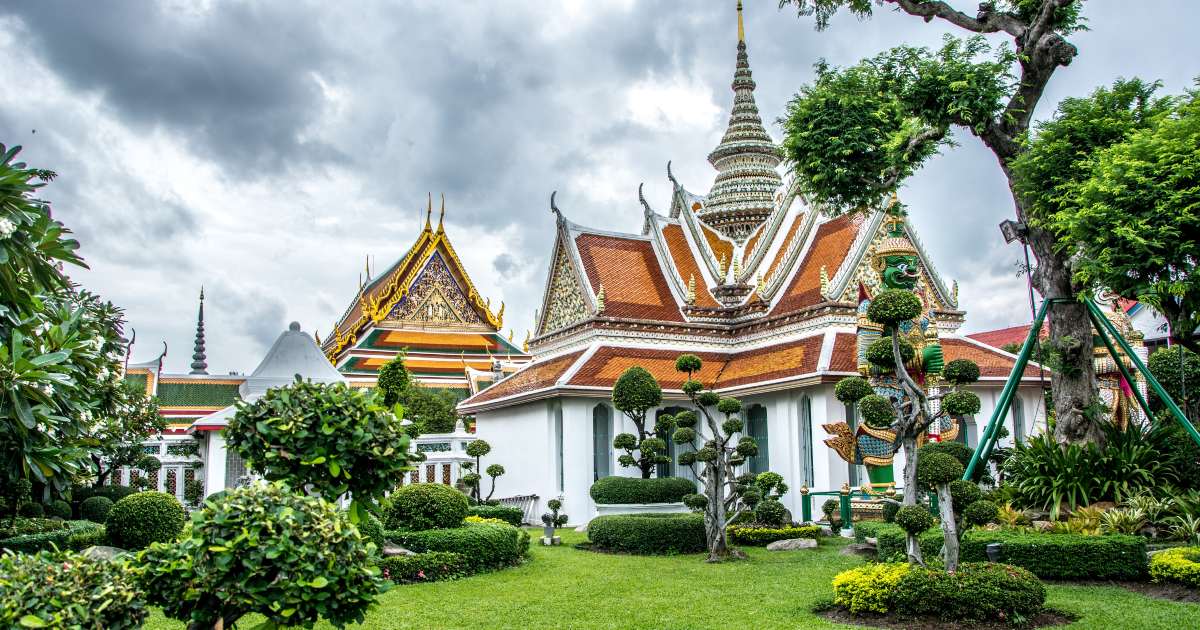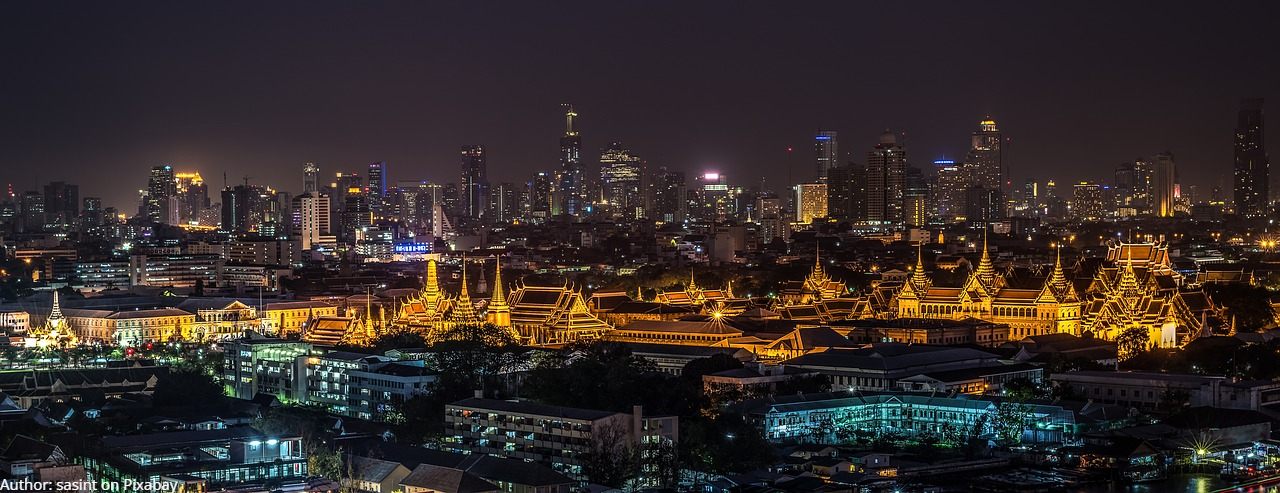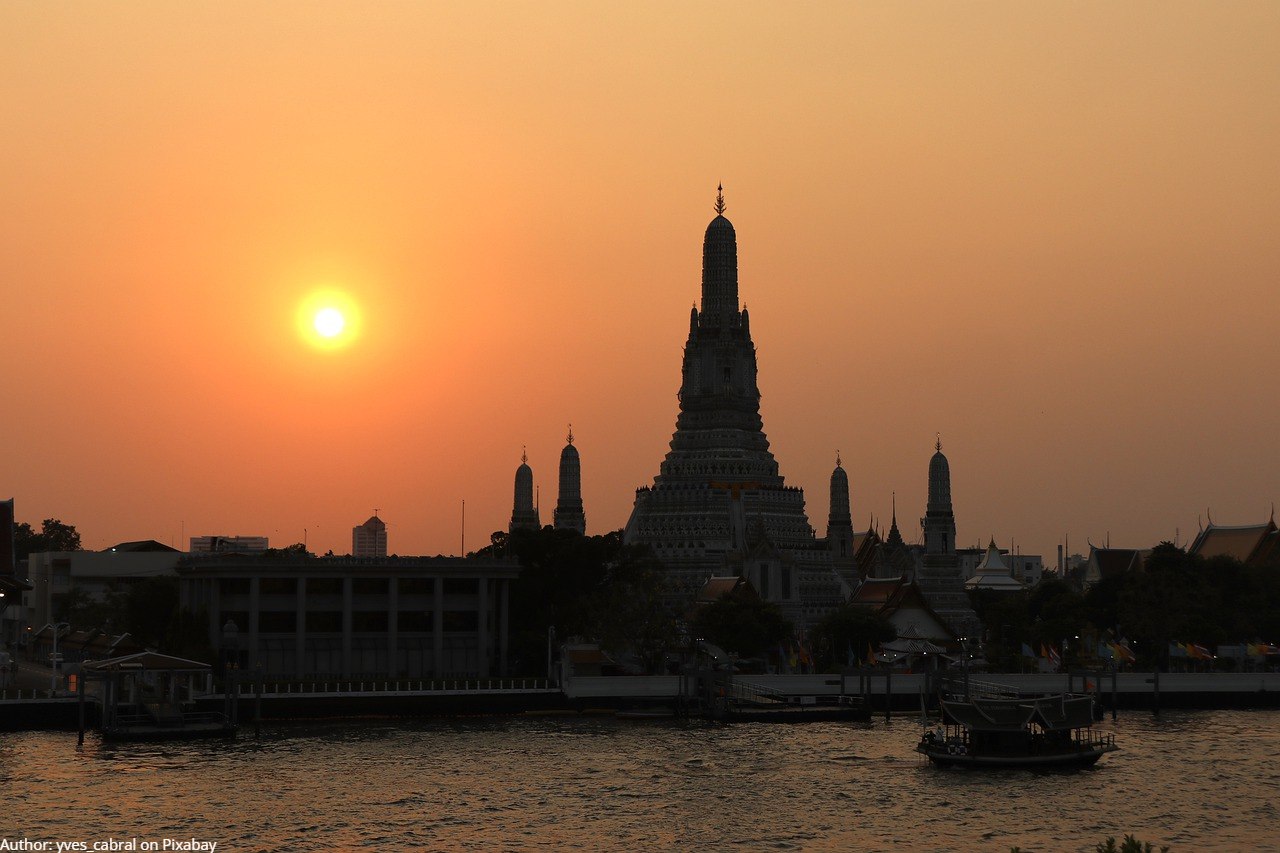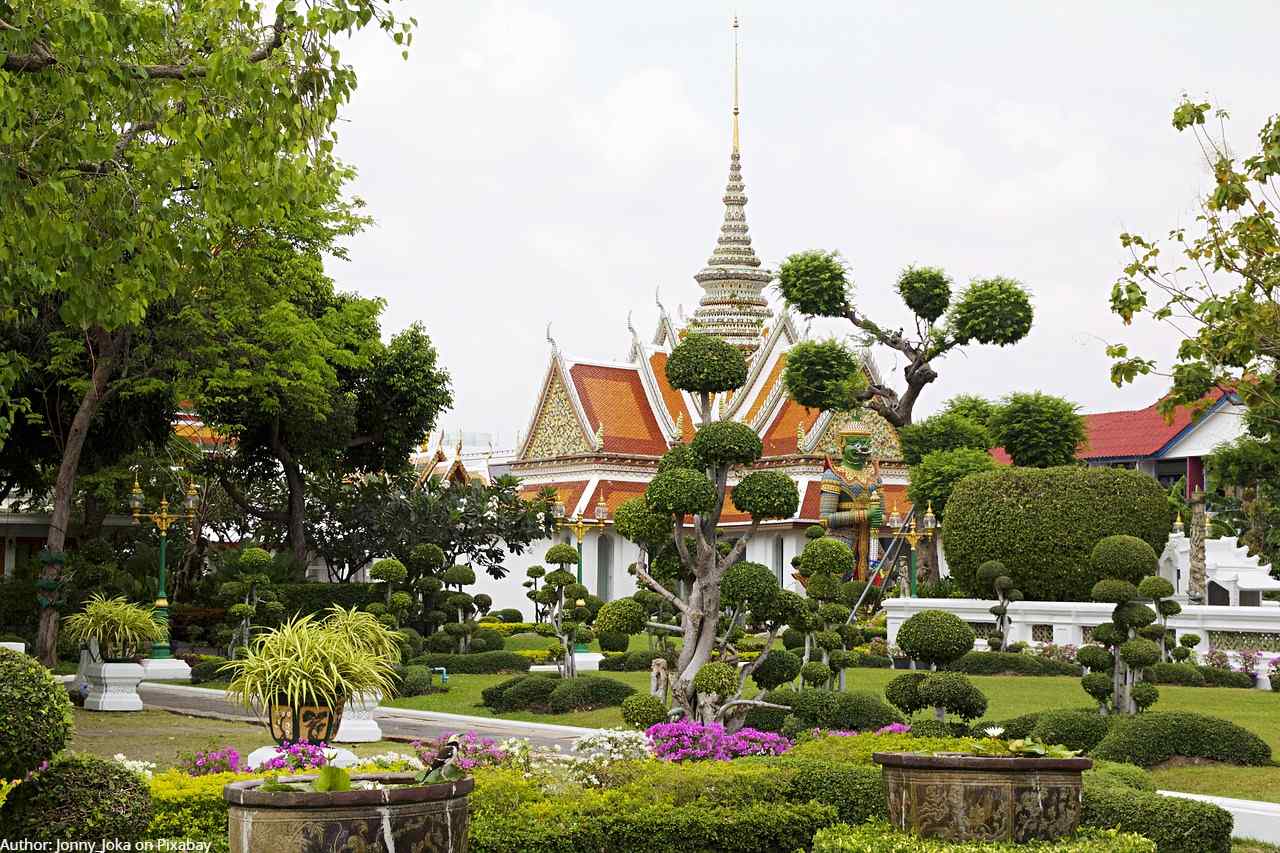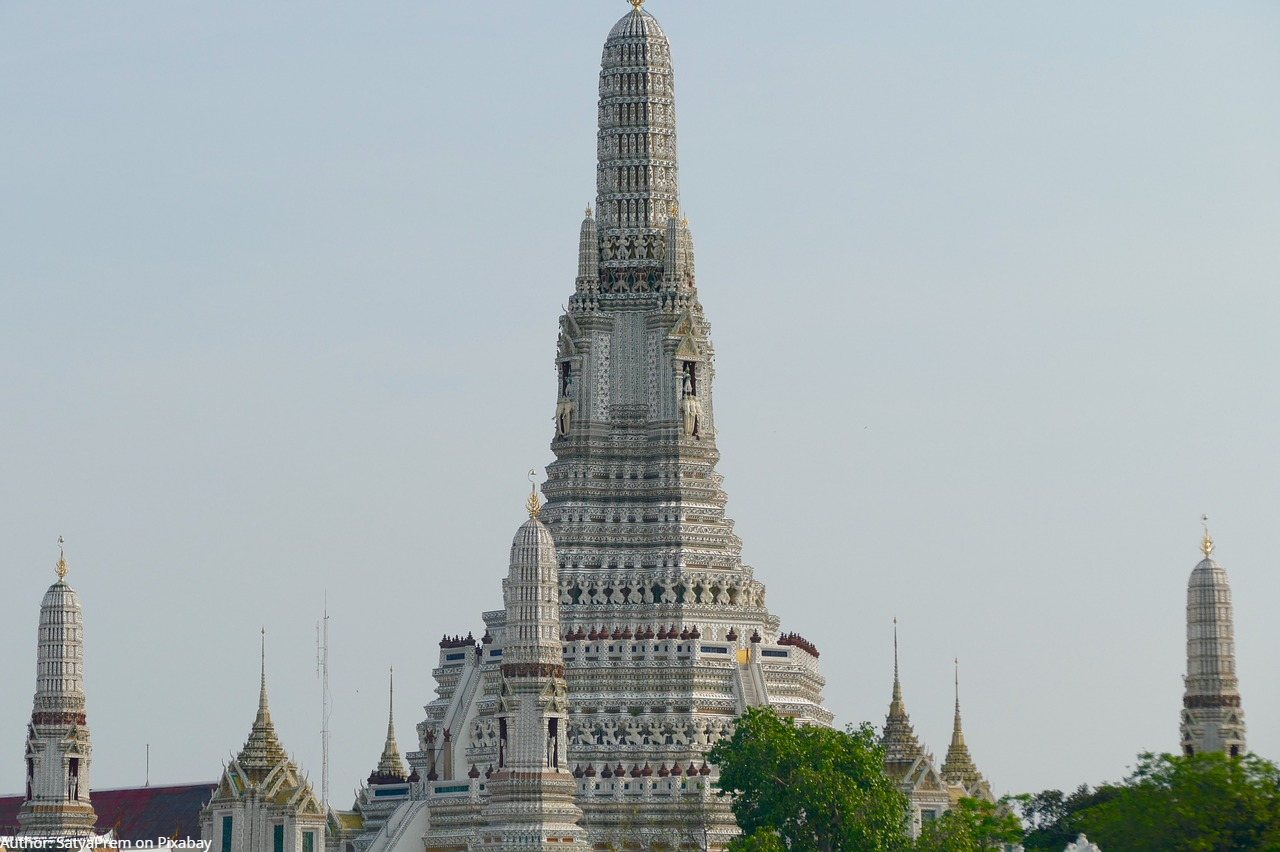When to visit Thailand during the year?
Thailand is blessed with a tropical climate, making it a year-round destination. However, the best time to visit is between November and February, when the weather is cooler and dry—ideal for exploring cities and islands. During this season, popular destinations such as Bangkok and Chiang Mai attract tourists for their vibrant festivals and outdoor activities. The summer months (March to June) can be quite hot, especially in the northern regions. The rainy season (July to October) brings heavy showers but also fewer tourists and lush landscapes, particularly in places like Koh Samui and Krabi, where the waterfalls are spectacular. Each season showcases Thailand's diverse beauty, catering to different interests and tastes.
How to get to Thailand?
Getting to Thailand is convenient thanks to its well-connected transport network. Multiple transportation options are available, including air, bus, train, and car, making travel from various parts of the world straightforward.
- Main airports in Thailand include Suvarnabhumi Airport (BKK) in Bangkok, Phuket International Airport (HKT), and Chiang Mai International Airport (CNX). Major international flights connect from North America (Los Angeles – LAX, approximately 16 hours), Europe (London – LHR, around 11 hours), Asia (Tokyo – NRT, about 6 hours), Australia (Sydney – SYD, roughly 9 hours), and South America (Sao Paulo – GRU, approximately 18 hours with layovers).
- Low-cost airlines, such as AirAsia and Thai Lion Air, provide budget-friendly options within Southeast Asia.
- Typical flight times from major hubs are around 2–3 hours from nearby countries like Vietnam and Malaysia, making it easy for travelers to hop over.
- Main bus terminals are in Bangkok (Mo Chit), connecting to cities like Chiang Mai, Phuket, and Ko Samui.
- Buses operate extensively, linking major regions and tourist hubs, providing affordable and scenic routes.
- Thailand National Railways connects neighboring countries such as Malaysia and Laos, offering an unforgettable journey.
- Key routes include Bangkok to Chiang Mai (about 14 hours) and Bangkok to Surat Thani (approximately 10 hours).
- Main highways such as the Asian Highway 1 (AH1) fork through Thailand, linking it to neighboring countries.
- For example, driving from Kuala Lumpur to Bangkok spans around 1,500 kilometers and takes about 18 hours.
- Potholes are common outside major cities, and some highways may have tolls; consider local traffic regulations.
Tourist activities in Thailand
Thailand is a vibrant tapestry of experiences, catering to all types of travelers. Adventure seekers can explore the rugged hills of Pai in the north, trek to dazzling waterfalls, or go rock climbing in Krabi's limestone cliffs. For the culture enthusiasts, the stunning temples in Bangkok and Ayutthaya are must-see sights filled with intricate architecture and storied history. Beach lovers can unwind on the powdery shores of Phuket, Koh Samui, or the lesser-known Koh Lipe, where crystal-clear water invites relaxation. Those with a taste for nightlife will find bustling streets in cities like Bangkok and Pattaya, laden with bars, nightclubs, and night markets offering local delicacies. Culinary tours explore Bangkok’s street food scene, while cooking classes throughout the country allow you to create your favorite Thai dishes.
Each region of Thailand has its unique offerings: the mountainous landscapes of the North, historical sites in the Central region, the beaches of the South, and the hidden gems of the Northeast. With countless festivals occurring throughout the year, you can indulge in authentic traditions, such as the Songkran Water Festival in April or the famous Yi Peng Lantern Festival in November, all while interacting with the welcoming local community.
Accommodation in Thailand
Accommodation options in Thailand are plentiful and diverse, catering to every budget and preference. From luxurious beachfront resorts in Phuket and Koh Samui to boutique hotels in Bangkok and affordable guesthouses in Chiang Mai, there’s something for everyone. Average prices range from $10 for budget hostels to $500+ for upscale hotels per night. In tourist-heavy areas, prices can increase during peak season (November to February). Villas and serviced apartments offer more privacy for families or groups, while backpackers will thrive in lively hostels that encourage socializing. Additionally, unique options like homestays provide intimate experiences of local living.
During the low season, bargains on accommodations can be found, making it a suitable time for budget travelers. Always check online platforms for reviews and recommendations to ensure your stay is pleasant. With so many varied choices, you're sure to find the perfect place to rest after a day of exploring.
Food in Thailand
Thai cuisine is renowned for its bold flavors, aromatic spices, and colorful presentation. Signature dishes, such as Pad Thai, Tom Yum Goong (spicy shrimp soup), and Som Tum (green papaya salad) highlight the country’s culinary diversity. Street food is at the heart of local eating culture, with dishes usually costing between $1 and $5. Popular spots include the bustling streets of Bangkok, where stalls serve everything from skewers to mango sticky rice. In more upscale restaurants, you can savor exquisite traditional meals along with fine dining experiences.
Don't forget to try local desserts like Thai iced tea and fresh fruit shakes, often found at night markets. Cultural practices dictate that meals are shared and enjoyed together, so embrace the family-style dining experience. Overall, Thai food promises a delightful journey for your palate.
Important numbers and information
- Emergency Services: Police - 191, Ambulance - 1669, Fire Brigade - 199
- Embassies: US Embassy, 95 Wireless Rd, Bangkok; UK Embassy, 14, 16, 18, +66 2 305 8333; Australian Embassy, 37 Sathon Nua, +66 2 344 6300
- Main Airports: Suvarnabhumi Airport (BKK) - 999 Route 1, Samut Prakan, Bangkok, 10540; Don Mueang International Airport (DMK) - 222 Vibhavadi Rangsit Rd, Bangkok, 10210
- Currency: Thai Baht (THB); Payment Methods: Cash and credit cards are widely accepted, but it's advisable to carry cash in markets.
- Visa/Passport Regime: Most tourists can enter for 30 days visa-free or apply for a tourist visa for up to 60 days.
What to see in Thailand?
Thailand is filled with remarkable attractions that showcase its rich history, culture, and natural beauty. Start in Bangkok, where the ornate Wat Pho and the Grand Palace embody the country’s legacy. Explore the ancient ruins of Ayutthaya, a UNESCO World Heritage site, where temples whisper tales of a bygone era. The stunning beaches of Krabi and Phuket draw sun-seekers and offer some of the best island-hopping experiences in the world.
Moreover, Chiang Mai’s old city is home to beautiful temples and the famous Night Bazaar, while the serene Pai is perfect for a laid-back getaway embraced by nature. Don’t forget to visit the tropical wonders of Khao Sok National Park, where dense jungles and limestone cliffs create a paradise for adventure enthusiasts. Each city has its unique charm, ensuring visitors leave with lasting memories.
History, geography and climate
Occupying the heart of Southeast Asia, Thailand has a rich tapestry of history and diverse geography. The historical journey spans periods from the ancient kingdoms of Sukhothai and Ayutthaya to the reign of the Chakri dynasty, which established the present constitutional monarchy. Situated between the Malay Peninsula and the Mekong River, the land offers a variety of landscapes including mountainous regions in the North, fertile plains in the Central region, and vast coastlines along the South.
Thailand experiences a tropical climate, with three main seasons: hot (March to June), rainy (July to October), and cool (November to February). Average temperatures are typically around 28°C (82°F) but can range from 20°C (68°F) in winter to 35°C (95°F) in summer. Understanding the country's climatic conditions and history enhances visitors' appreciation of Thailand’s vibrant culture and remarkable landscapes.
Population and culture
Thailand is home to approximately 70 million people, making it one of the most populous countries in Southeast Asia. Thai is the national language, but English is widely spoken in tourist areas. The populace is predominantly Buddhist, which deeply influences traditions and customs. Festivals, such as Loy Krathong and Songkran, reflect the Thai spirit of togetherness and reverence for their cultural heritage.
Culturally rich, Thailand is known for its elaborate festivals, traditional music, and dance forms like Khon. The arts are vibrant, with crafts ranging from silk weaving to intricate wood carving. This unique blend of history, religion, and customs fosters a warm and inviting atmosphere for visitors, providing opportunities to connect with locals and participate in cultural experiences.

